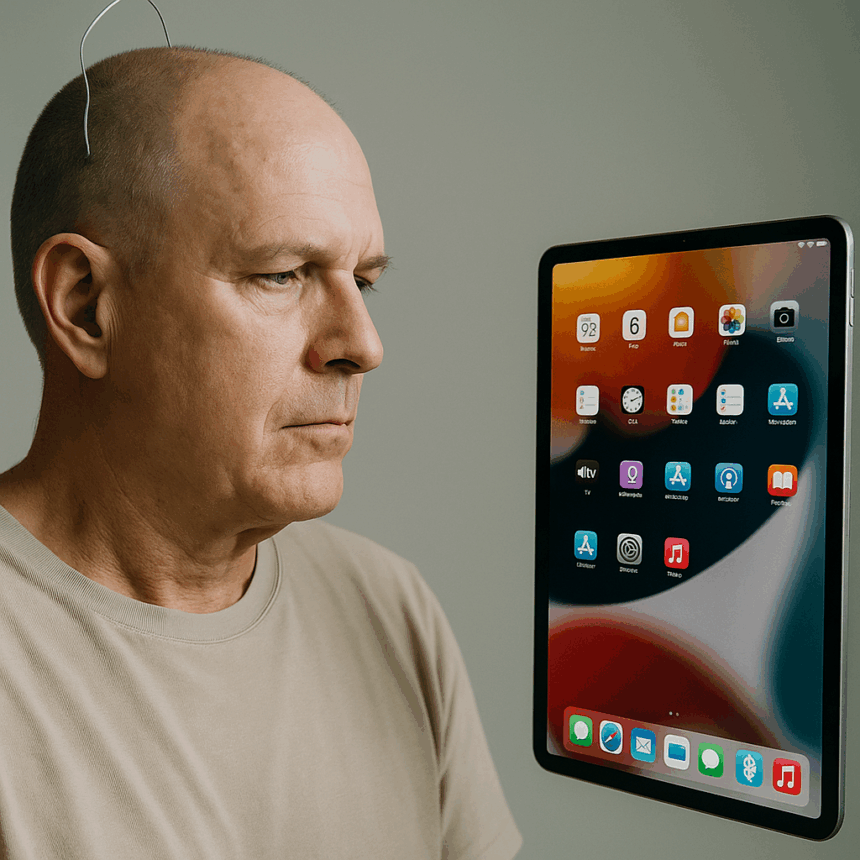Brain-computer interfaces (BCIs) now connect directly to Apple devices, allowing users to control iPads and iPhones using just their thoughts. New York-based Synchron leads this breakthrough with its Stentrode brain implant, showcasing its innovation in Synchron BCI iPad control, making it the first company to officially link BCIs with Apple’s ecosystem. This technology opens new doors for people with paralysis and other disabilities, granting them unprecedented independence.
What’s Happening & Why This Matters
Synchron’s Stentrode implant connects to Apple devices via Bluetooth, supporting iOS, iPadOS, and visionOS. An integration treats the brain implant like a keyboard or mouse, enabling seamless control without hands, voice, or eye movement.

Patient Mark Jackson, who lives with ALS, uses his implant to navigate his iPad entirely by thought. He opens apps, composes text, and communicates independently, significantly improving his quality of life. Mark shares, “When I lost the use of my hands, I thought I lost my independence. Now, I can message loved ones and stay connected—just by thinking.”
This official Apple integration differs from previous setups where Synchron or Neuralink created custom, nonstandard connections. Now, BCI companies can tap directly into Apple’s systems — enabling new features and smoother user experiences.
A standout innovation is the signal strength meter, which visually shows users how well their thoughts register with the device. When Mark focuses on an app icon, a blue box indicates signal quality, guiding him to refocus or adjust if needed. Synchron’s COO, Kurt Haggstrom, calls it “a game changer” that helps patients intuitively optimize control without clinician help.
Synchron CEO Dr. Tom Oxley likens the feedback to seeing your hand move toward a coffee cup before grabbing it. This insight deepens the user’s connection with the technology, making thought-control more natural.
Synchron began working with Apple years ago to refine this integration. Though the FDA has not yet approved BCIs for commercial sale, Synchron envisions these devices becoming mainstream consumer tech beyond clinical trials.
Crossing the milestone brings BCIs closer to everyday use. BCI implementations can transform how people with severe paralysis interact with the world. In a med-tech future, digital cognitive input may be a common control method.
TF Summary: What’s Next
Synchron’s brain implant officially connects to Apple devices, empowering users like Mark Jackson to control iPads with their thoughts. The addition of real-time signal strength feedback enhances usability and independence.
As FDA approvals progress and technology scales, BCIs may soon enter mainstream consumer markets. The breakthrough is another stride toward integrating human cognition directly with everyday devices.
— Text-to-Speech (TTS) provided by gspeech



